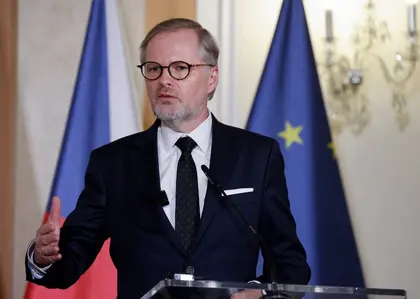The military issues website BulgarianMilitary.com has cast a spotlight on the soaring costs of Russian President Vladimir Putin’s obsessional full-scale war in Ukraine, now deep into its third year.
The report is based on figures produced by Janis Kluge, a researcher from Germany’s Stiftung Wissenschaft und Politik(SWP) - the Berlin based Institute for International and Security Affairs.
JOIN US ON TELEGRAM
Follow our coverage of the war on the @Kyivpost_official.
Kluge has produced a detailed breakdown of defense expenditure within the Russian Federation’s budget for the first two and a half years of the war in Ukraine.
According to the report, the first half of 2024 has seen Russia allocate an extraordinary 5.3 trillion rubles ($59 billion)towards military personnel and equipment costs. This is around 36 percent more than in the same period last year and equates to a daily expenditure of 29 billion rubles ($319 million) or an incredible 1.2 billion rubles ($13.2 million) an hour.
Kluge has attempted to put those figures into context by comparing them with Russia’s main areas of social expenditure. They are almost one and a half times the annual budget for the national economy support program, three times the entire national higher education system, 18 times the yearly budget for National Health projects, and 90 times the total regional budget for the Republic of Tuva.
In terms of weapons and equipment procurement, there has been a 54 percent increase compared with 2023 and a staggering 126 percent increase on 2022. Kluge also highlights a year-on-year increase in secret spending for frontline weapon systems, which in 2024 had reached more than 1 trillion rubles ($11 billion) per quarter.

FSB Officer Shot Dead in Moscow Ministry of Defense Building
Personnel costs for the military have similarly surged, primarily because of the need to fund the incentives used to attract “volunteers” and contract soldiers to avoid having to resort to forced mobilization to compensate for frontline losses. These have increased by more than 25 percent compared with last year and an astonishing 175 percent since 2021.
Another area that has seen a dramatic increase is spending on foreign military-technical cooperation, much of which stems from the purchase of munitions and missiles from Iran, North Korea and elsewhere. Kluge estimates that Russia expended around 270 billion rubles ($29.7 billion) in the first half of the year.
While this substantial military spending may find favor with Putin’s confederates and provides a false picture of increases in Russia’s GDP, ordinary people are beginning to suffer economic hardship and will eventually notice the deterioration in social sector funding.
Russia set its 2024 defense budget at 10.8 trillion rubles ($119billion) equivalent to almost 30 percent of total national spending. As if that wasn’t astounding enough, Kluge estimates that actual military spending this year could reach13.3 trillion rubles ($146 billion) or more, representing almost 8 percent of GDP.
The only saving grace for Russia in trying to manage this mind-blowing level of military expenditure was the income from gas and oil which had kept the federal budget (just) in surplus for four out of the first eight months of this year. However, oil prices are currently declining, with Russian Urals crude dipping below $60 a barrel in September, a decrease of 18 percent on the August price.
Kluge said that Moscow’s 2025 budget, which is heavily dependent on oil income, is based on an assumed price of $70 per barrel, with the Russian commercial bank Rosbank commenting that the likely decrease in oil prices will “definitely not be comfortable for the federal budget.”
As oil prices fall, Russia may well struggle to maintain its anticipated military funding requirements for the war in Ukraine without even further, deeper, cuts in socio-economic expenditure. It could be that financial considerations, as much as politics or military action, will encourage a move towards peace.
You can also highlight the text and press Ctrl + Enter






